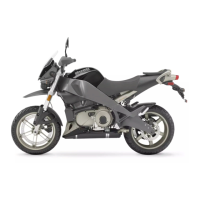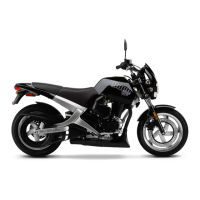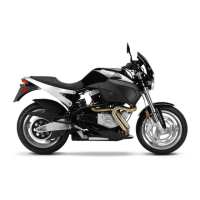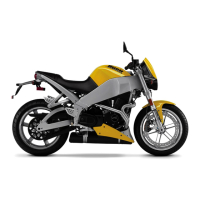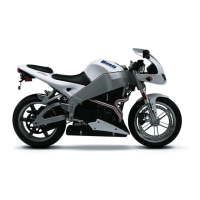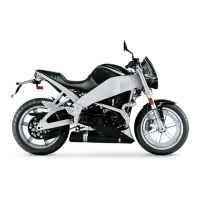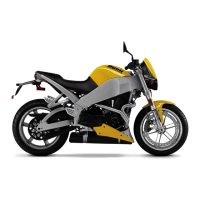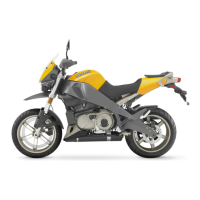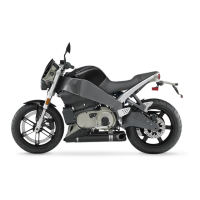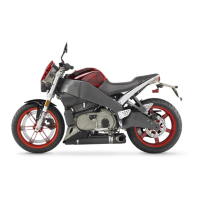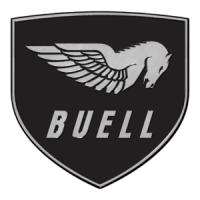2006 Buell Lightning: Chassis 2-45
HOME
INSTALLATION
1. See Figure 2-61. Install brake pad retainer (1) if
removed.
2. See Figure 2-58. Install caliper assembly on caliper
mount. Brake pad surfaces must face rear brake rotor.
a. Install large caliper screw (7) (metric) tightening to
18-21 ft-lbs (24-28 Nm).
b. Install small caliper screw (6) (metric) tightening to
14-18 ft-lbs (19-24 Nm).
c. Install caliper carrier onto swingarm tightening cali-
per carrier fasteners (8) to 24-26 ft-lbs (33-35 Nm).
11WARNING1WARNING
Use only new copper crush banjo washers (See Parts
Catalog for Part No.) with D.O.T. 4 brake fluid. Earlier sil-
ver banjo washers are not compatible with D.O.T. 4 fluid
and will not seal properly over time. Failure to comply
may adversely affect braking ability and lead to brake
failure which could result in death or serious injury.
NOTE
To avoid leakage, verify that gaskets, banjo bolt, hydraulic
brake line and caliper bore are completely clean.
3. See Figure 2-58. Connect brake line (1) to caliper using
two new copper washers (3) and banjo bolt (2) (metric).
Tighten to 16-20 ft-lbs (22-27).
4. Depress rear brake pedal several times to set brake pads
to proper position within caliper. Bleed brake system.
See 1.6 BRAKE SYSTEM MAINTENANCE.
5. See Figure 2-62. Verify proper fluid level in reservoir.
After repairing the brake system, test brakes at low
speed. If brakes are not operating properly, testing at
high speeds can cause loss of control, which could
result in death or serious injury. (00289a)
6. Turn ignition key switch to ON. Apply brake pedal to test
brake lamp operation. Turn ignition key switch to LOCK.
Be sure that all lights and switches operate properly
before operating motorcycle. Low visibility of rider can
result in death or serious injury. (00316a)
NOTE
Avoid making hard stops for the first 100 miles (160 km) to
allow new brake pads to “wear in” properly with the brake
rotor.
Figure 2-62. Rear Reservoir (XB12S shown)
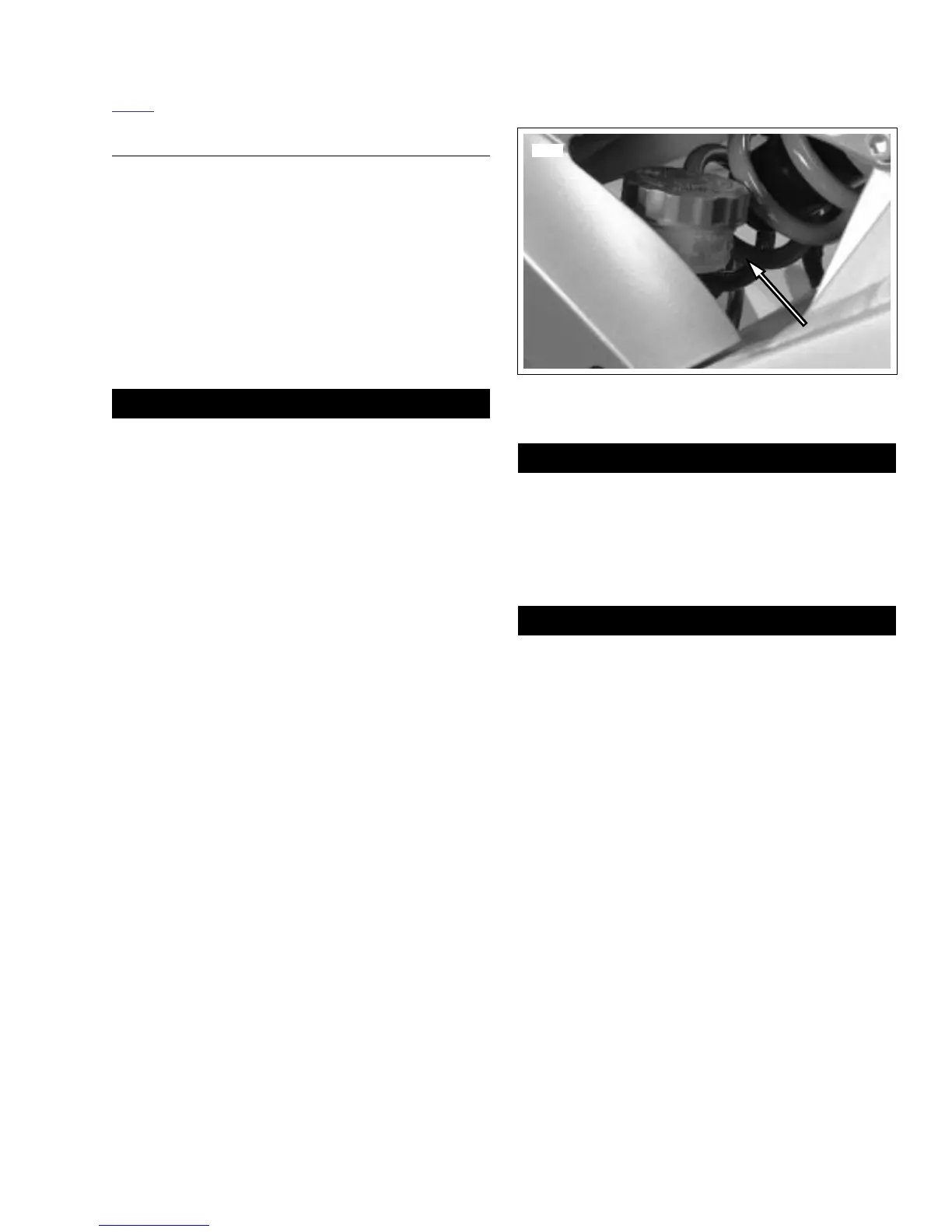